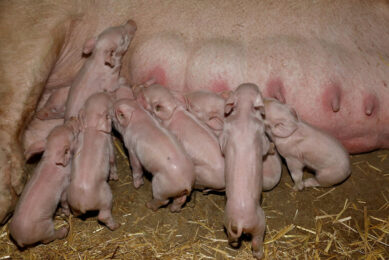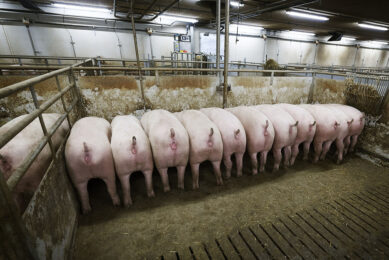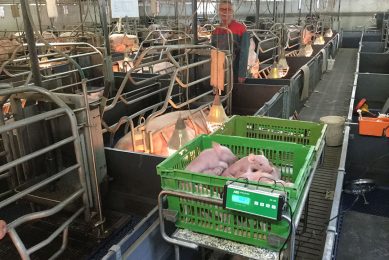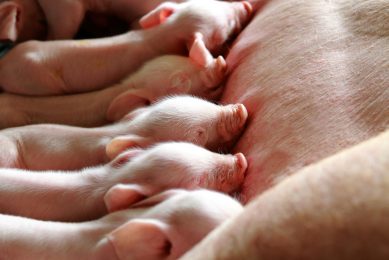I trail a coat. Is the gilt really a ‘herd contaminant’?
Parity segregation (where the replacement female up to the second lactation is kept physically separate from the rest of the herd) seems to be successful. Parity segregation promises fewer of certain diseases and a much longer sow productive life (SPL).
Parity segregation (where the replacement female up to the second lactation is kept physically separate from the rest of the herd) seems to be successful. Parity segregation promises fewer of certain diseases and a much longer sow productive life (SPL).
The concept is based on the premise that the young sow’s immune system is immature and until she is older she is a disease shedder. If she is kept away from the older sows, which means having two herds within the one, the disease shedding effect is contained and thus not a brake on the productivity of the whole herd.
Results so far suggest that they outweigh the extra costs and possibly even make the extra hassle worthwhile.
Realisation
Parallel to this technology is the realisation that we haven’t been feeding and managing these genetically-improved females we are increasingly buying too cleverly up until now. Nutritionally we may have fallen behind in not providing these gilts with the diets (special gilt developer, gilt gestation, and gilt lactation diets) they require.
Also that we have been in too much of a hurry to get them bred. And we have not defended them sufficiently from the depredations of the large and heavier first litters that these modern gilts can supply. The three together put a productive strain on the young sow which further delays it from forming a good immune barrier. Hence disease shedding.
Trailing a coat
The coat I’d like to trail here is not to decry the work on parity segegation as it is certainly making us think about things in a new light, but to ask if the good results have come mainly from our not treating the modern genetically-improved gilt as we should be doing by following now outmoded protocols and that parity segregation papers over these cracks?
There are about main 25 groundrules for the modern gilt. I find that when they are mostly followed then the farms are not overly plagued with reproductive disease. Also many of them already achieve SPLs (Sow Productive Lives) of between five to six litters which parity segregation does.
Area of benefit
The other area of benefit seems to be to keep the progeny of parity 0 and 1 females quite separate from those weaners from the older sows – which we all do at present. At least until they vacate the nursery. No special diets or medication unless the vet advises, just keep them apart environmentally and managementally and they all grow-out much better.
Both groups of weaners do – the ‘shedders’ and especially the ‘uncontaminated’. This is much less costly as we would have to have the nursery accommodation anyway, rather than provide a whole mini-breeding unit for the younger sows. Isn’t it interesting!
So as the exam paper says… ‘Please discuss?’











